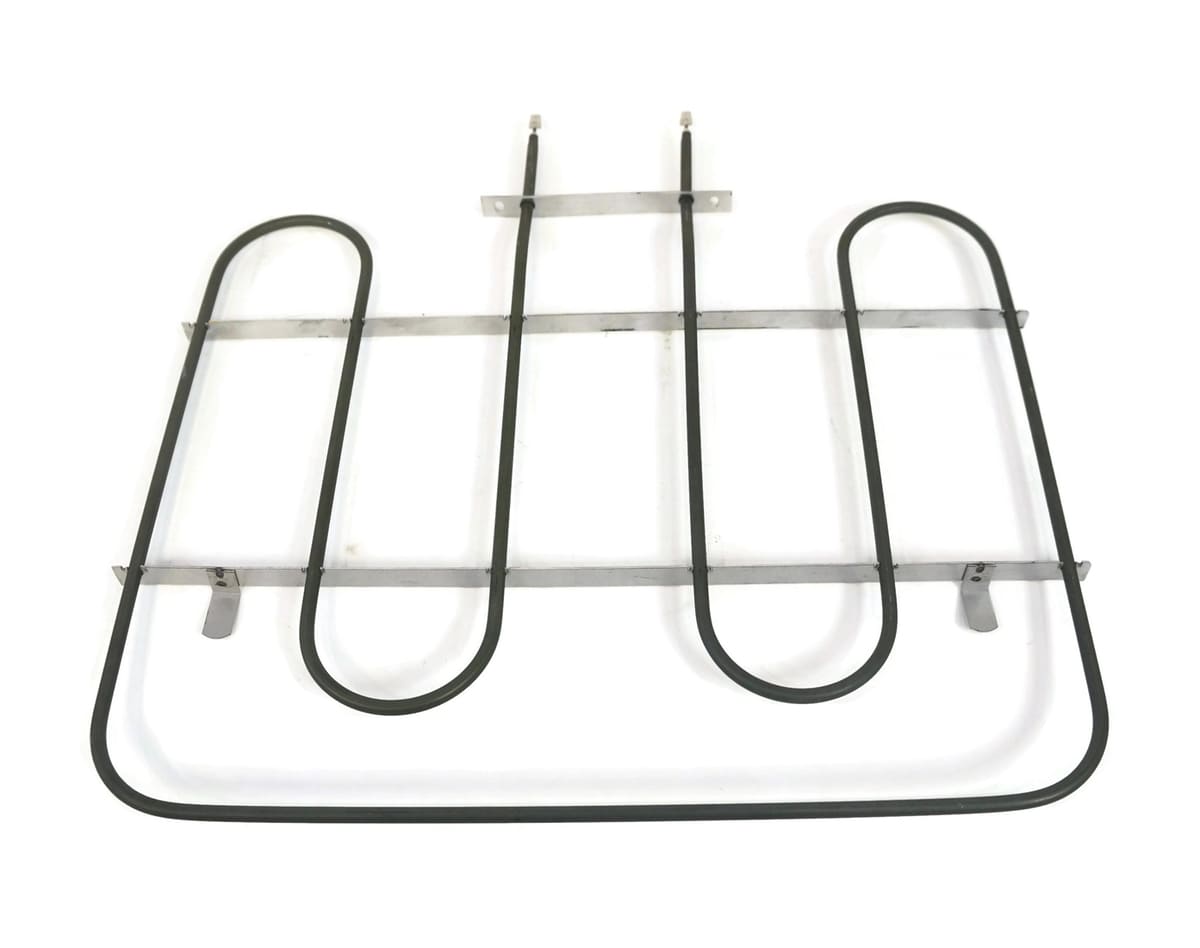Hidden bake elements are becoming increasingly popular in modern ovens and ranges, and there are many pros and cons when deciding whether to use them. In this blog post, we’ll discuss the Hidden Bake Element Pros And Cons in detail so you can decide whether a hidden bake element is suitable for your kitchen. Please keep reading to uncover the secrets of hidden bake elements and learn more about their advantages and disadvantages.
What Is A Hidden Bake Element?
A hidden bake element is a feature found in some ovens where the heating element, also known as the bake element, is located behind the oven floor. This design allows for a smooth, easy-to-clean surface and eliminates needing a removable drip tray. The hidden bake element is not visible to the user, and the heat is distributed through the oven floor.
This design is often found in modern ovens and is becoming increasingly popular among homeowners and chefs. It can be a convenient and efficient way to bake. Still, it also has downsides that should be considered before purchasing an oven with a hidden bake element.
What Is A Hidden Bake Element In An Oven?
A hidden bake element in an oven is a heating element located at the bottom of the oven and is not visible. It is typically used to provide heat for baking. It is often used in combination with a broil element located at the top of the oven. The hidden bake element helps to distribute heat evenly throughout the oven, improving the quality of baked goods.
Hidden Bake Element Pros And Cons
Pros:
-
Improved heating efficiency
Hidden bake elements are located underneath the oven floor, allowing for more consistent and even heating throughout the oven. This can result in better cooking and baking results.
-
Easy to clean
Since the bake element is hidden, it is protected from spills and drips, making it less likely to become dirty or stained. This makes cleaning the oven much more accessible.
-
Sleek design
These elements give the oven a cleaner and more modern look, which can be a plus for those who value aesthetic appeal in their kitchen appliances.
-
Enhanced safety
Hidden bake elements prevent accidental burns or injuries from coming into contact with the hot bake element. This can provide a safer cooking experience for families with young children.
-
Improved energy efficiency
Hidden bake elements can help to reduce energy consumption and save money on utility bills by providing more consistent and efficient heating.
-
No heat loss
Hidden bake elements are protected from the top of the oven, which means that heat loss is less common. This can help to retain heat and keep the oven at a consistent temperature, leading to better baking and cooking results.
Cons:
-
Higher cost
Hidden bake elements can be more expensive than traditional ones, which may deter some consumers.
-
Limited accessibility
Because the bake element is hidden, it can be more challenging to access for repairs or maintenance. This may require more specialized tools and expertise, leading to higher repair costs.
-
Reduced baking space
With the bake element underneath the oven floor, some ovens with hidden bake elements may have slightly less space for baking and cooking. This can be an issue for those who frequently cook large meals or entertain guests.
-
Potentially reduced lifespan
Due to the element’s location, it may be harder to detect when it’s going wrong, and it may be more prone to damage due to the accumulation of food particles and debris over time. This can result in a reduced lifespan for the hidden bake element.
Hidden Bake Element Review
The Hidden Bake Element in my oven has been a game-changer. No more struggling to clean around the traditional exposed bake element, as it is now tucked away and easily accessible for cleaning. Plus, the heat distribution is more even, resulting in perfectly cooked dishes every time. I highly recommend this feature for anyone looking to upgrade their oven.
Is A Hidden Bake Element Good?
A hidden bake element is a heating element in an oven located at the bottom of the oven and is not visible. This design can be beneficial because it makes cleaning the bottom of the oven easier, as there is no exposed element that can become covered in food or spills.
Moreover, a hidden bake element can provide more even heat distribution. They can help to prevent the burning of food at the bottom of the oven. However, it also depends on the brand and model of the oven. Some hidden bake elements may not heat as evenly as others or may be more challenging to access for cleaning.
Who Needs A Hidden Bake Element?
A hidden bake element is typically found in ovens with a smooth, easy-to-clean surface on the bottom. This element is hidden under the oven floor, making it less visible and less likely to be damaged.
People who value a sleek, modern appearance in their kitchen appliances and who want an oven that is easy to clean may prefer an oven with a hidden bake element. People who use the oven’s bottom heating element frequently may also benefit from a hidden bake element as it tends to distribute heat more evenly.
How To Choose The Best Hidden Bake Element?
When choosing a hidden bake element, there are a few key considerations to keep in mind:
Compatibility
Ensure the hidden bake element you choose is compatible with your oven model. This can usually be found in the owner’s manual or by contacting the manufacturer.
Wattage
The wattage of the hidden bake element is essential as it will determine how much heat the element can produce. A higher wattage will result in a faster preheat time and more even heat distribution.
Durability
Look for a hidden bake element that is made with high-quality materials and is built to last. This will ensure that your element will last for many years and will not need to be replaced frequently.
Price
Hidden bake elements can vary in price, so be sure to find one that fits your budget while still meeting your other requirements.
Brand
It is also essential to consider the brand of the hidden bake element. Some brands are known for producing high-quality products that are durable and reliable. In contrast, others may be less reputable.
How To Decide Between A Hidden Bake Element Or A Standard Oven?
When deciding between a hidden bake element or a standard oven, there are a few factors to consider. A hidden bake element is located under the oven floor, which makes it easier to clean and prevents food from spilling onto it. However, it can also make it more difficult to access the element for repairs or maintenance.
On the other hand, a standard oven has the bake element located at the bottom of the oven, which makes it more accessible but can also make it more prone to spills and harder to clean. Also, a hidden bake element may have a slightly longer preheat time. They may not provide as even of a heat distribution as a standard oven. Ultimately, deciding between a hidden bake element or a standard oven will depend on your personal preferences and cleaning habits.
How To Make The Best Use Of A Hidden Bake Element?
A hidden bake element is a heating element located underneath the oven floor rather than at the back or bottom of the oven. To make the best use of a hidden bake element, follow these steps:
Preheat the oven
Always preheat the oven before using it. This allows the hidden bake element to reach the desired temperature before you start cooking.
Use the right cookware
Use cookware made of materials that can withstand high temperatures, such as heavy-duty aluminum or steel. Avoid using cookware with plastic or wooden handles, as they can melt or burn.
Place the food in the center of the oven
The hidden bake element is located at the bottom of the oven, so place the food in the center of the oven to ensure even heating.
Use the right oven rack
Use the middle oven rack to ensure that the food is in the middle of the oven and in proximity to the hidden bake element.
Check the food frequently
Since the hidden bake element is underneath the oven floor, it can be harder to see the food as it cooks. Check the food frequently and use a thermometer to ensure it is cooking at the desired temperature.
Use the convection setting if your oven has it
Convection ovens use a fan to circulate the hot air, which can help to distribute the heat evenly and cook the food more quickly.
Clean the oven regularly
Clean the oven regularly to ensure the element is not covered in grease or food particles which can affect the heating.
How To Install A Hidden Bake Element?
It is essential to follow the manufacturer’s instructions for installation as the process may vary depending on the specific oven model. It is also highly recommended that you consult an electrician or a professional to become more familiar with the task.
- First, turn off the power to the oven at the circuit breaker or fuse box.
- Remove the oven door and any racks or accessories inside the oven.
- Locate the screws or clips that hold the back panel in place and remove them.
- Carefully remove the back panel to access the bake element.
- Disconnect the wires from the old bake element by removing the screws or clips that hold them in place.
- Insert the new bake element into the oven, ensuring it fits securely.
- Reconnect the wires to the new bake element and secure them with screws or clips.
- Replace the back panel and any removed racks or accessories.
- Turn the power back on to the oven and test the bake element to ensure it works correctly.
How To Replace A Hidden Bake Element?
The steps to replace a hidden bake element are similar to those for installing one.
Hidden Bake Element Replacement:
- Turn off the power to the oven at the circuit breaker or fuse box.
- Remove the oven door and any racks or accessories inside the oven.
- Locate the screws or clips that hold the back panel in place and remove them.
- Carefully remove the back panel to access the bake element.
- Disconnect the wires from the old bake element by removing the screws or clips that hold them in place.
- Take out the old bake element.
- Insert the new bake element into the oven, ensuring it fits securely.
- Reconnect the wires to the new bake element and secure them with screws or clips.
- Replace the back panel and any removed racks or accessories.
- Turn the power back on to the oven and test the bake element to ensure it works correctly.
How Do You Replace The Hidden Bake Element In A Ge Oven?
Note: The steps may vary depending on the specific model of your oven. It is always recommended to refer to the manufacturer’s instructions manual before attempting to repair or replace any part of the oven.
- Unplug the oven or shut off the power at the circuit breaker.
- Remove the oven racks.
- Locate the access panel on the back of the oven, usually held in place by screws. Remove the panel.
- Locate the hidden bake element. A significant circular heating element will be located at the oven’s bottom.
- Carefully pull the element out from the back of the oven, being careful not to damage the wiring.
- Disconnect the wires from the element by either unplugging them or removing the screws holding the wires.
- Install the new element by reversing the steps above and reconnecting the wires.
- Replace the access panel and turn the power back on.
- Test the oven to make sure it is heating properly.
Overall Thoughts
Ultimately, it’s up to you to decide if the hidden bake element suits your needs. We’ve eliminated some of the confusion for you. However, we’ve also highlighted some areas where there’s still some uncertainty. Ultimately, it’s up to you to weigh these pros and cons and make an educated decision on this critical point.



